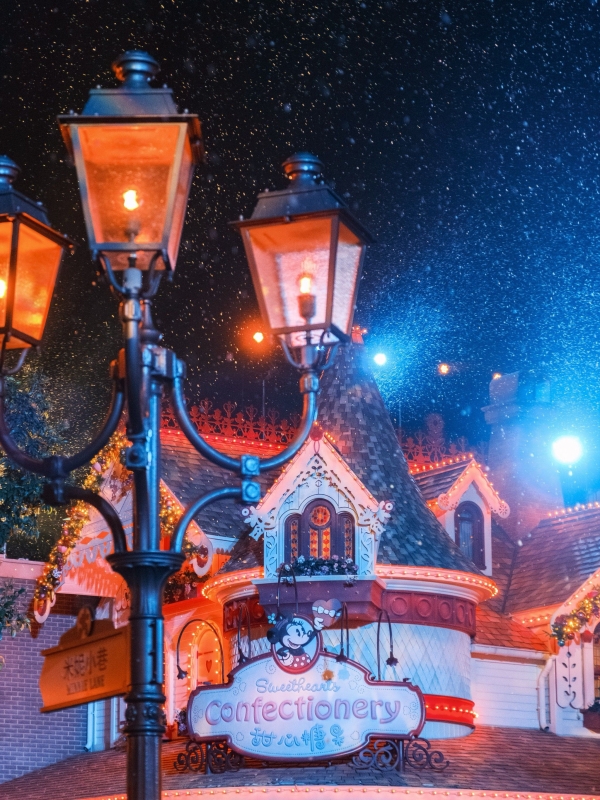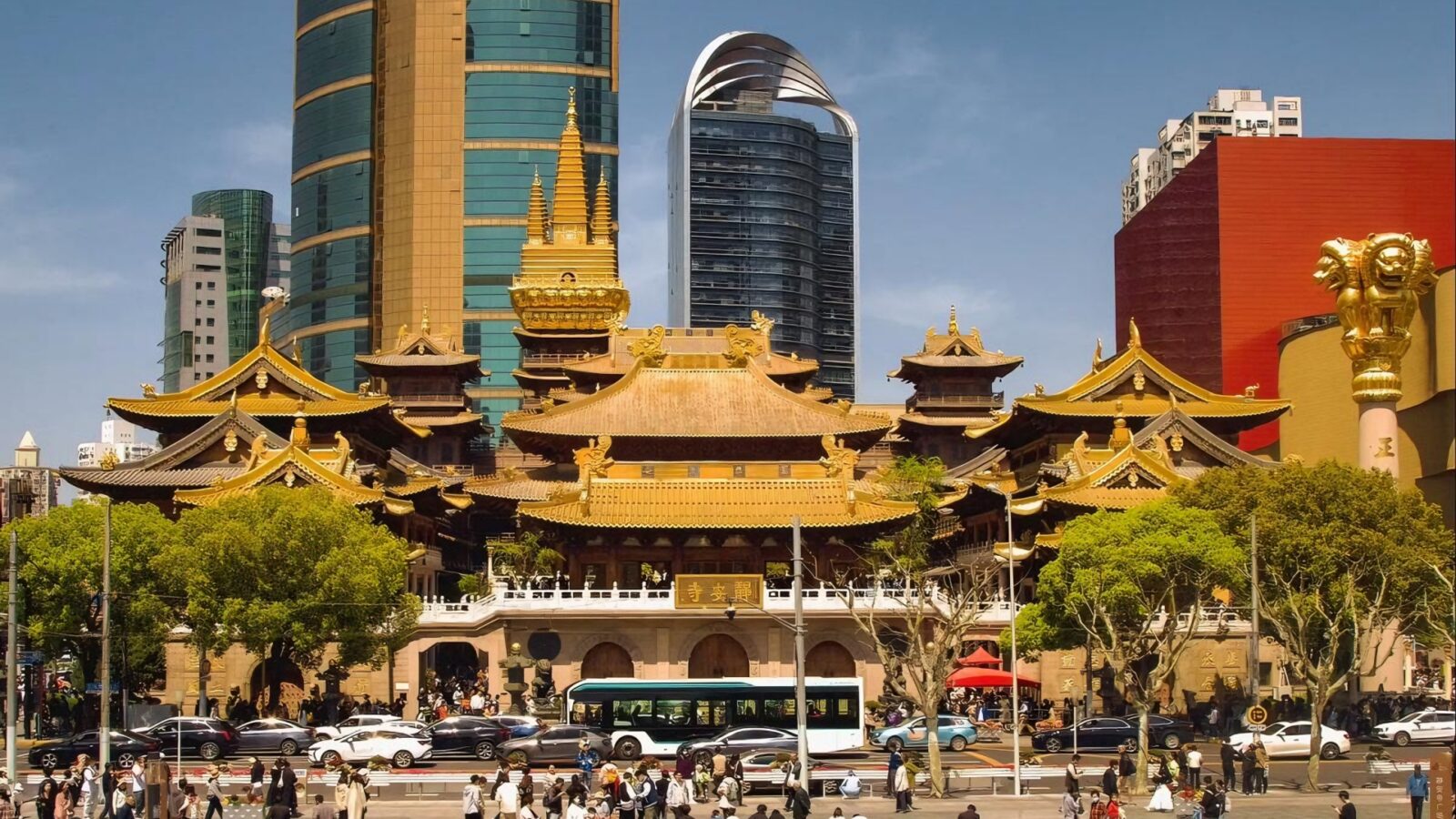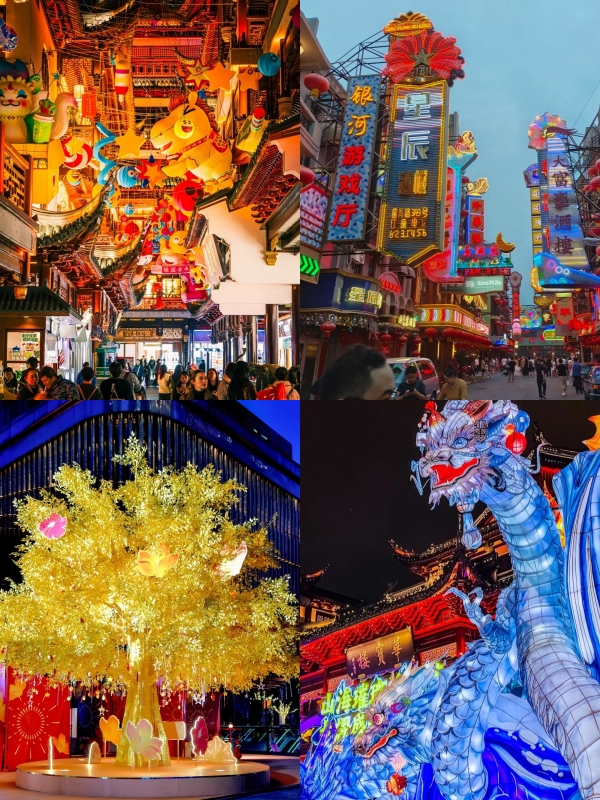Packing for a trip to Shanghai usually begins with one big question: What’s the weather going to be like when you get there? This is a city that can turn its mood around in a day. A week in June has you running into a convenience store for cold water, while a November stroll along the Bund has you wishing you had gloves. Numbers on charts tell only part of the story — what matters is how weather dictates your day. This is why checking the weather in Shanghai by month is not only a give’n take statistics, it is the line between a nice adventure and a frustrating journey.
Climate Overview: Shanghai Weather by Month

shanghai
Four Distinct Seasons
The climate in Shanghai, as in the city’s personality, is never actually boring, but can be occasionally delightful and hoopsidedly frustrating. Sitting in a subtropical monsoon zone may sound technical, but it translates to really feeling four seasons. Yearly temperatures average about 16°C. That number sounds very neutral, but July has a tendency to be like fire and January comes off as cold as a cornered suspect despite the digits. The upside is variety: spring flowers, autumn color. The downside, of course, is the unpredictability: a sunny morning can slip into a day of grey drizzle before you finish lunch.
Extremes of Heat and Cold
The winter does not bring postcard snow scenes but rather a cold and damp tingle that many say is harder to take than freezing dryness. On the plus side, tis the season for steaming hot pot, glowing lanterns and less expensive hotel rates. Summer flips everything. The heat can be hellish, glasses fog as soon as you step off the metro, and typhoons can cancel travel. But the long nights by the Huangpu, the nightlife and the inexpensive indoor entertainment keep the season buzzing. Both extremes have appeal and frustration — you win some, you lose some.
Rainfall and Travel Impact
Rainfall is another mixed bag. Over half of the year’s rainfall comes between May and September. That also means verdant parks and dramatic skies, of course, but it also means sopping shoes, canceled flights and umbrellas blown inside out. Hotels tend to drop prices in these wet months, a boon for budgets if you don’t mind the sticky air. Instead, autumn is celebrated as Shanghai’s showpiece: clear skies, gentle breezes, and less tumult with the weather. It’s a reminder that timing your visit isn’t just about averages, but also about picking which Shanghai you’d like to call on — the calm, the storm or a bit of both.
Seasons in Shanghai: A Monthly Weather Guide
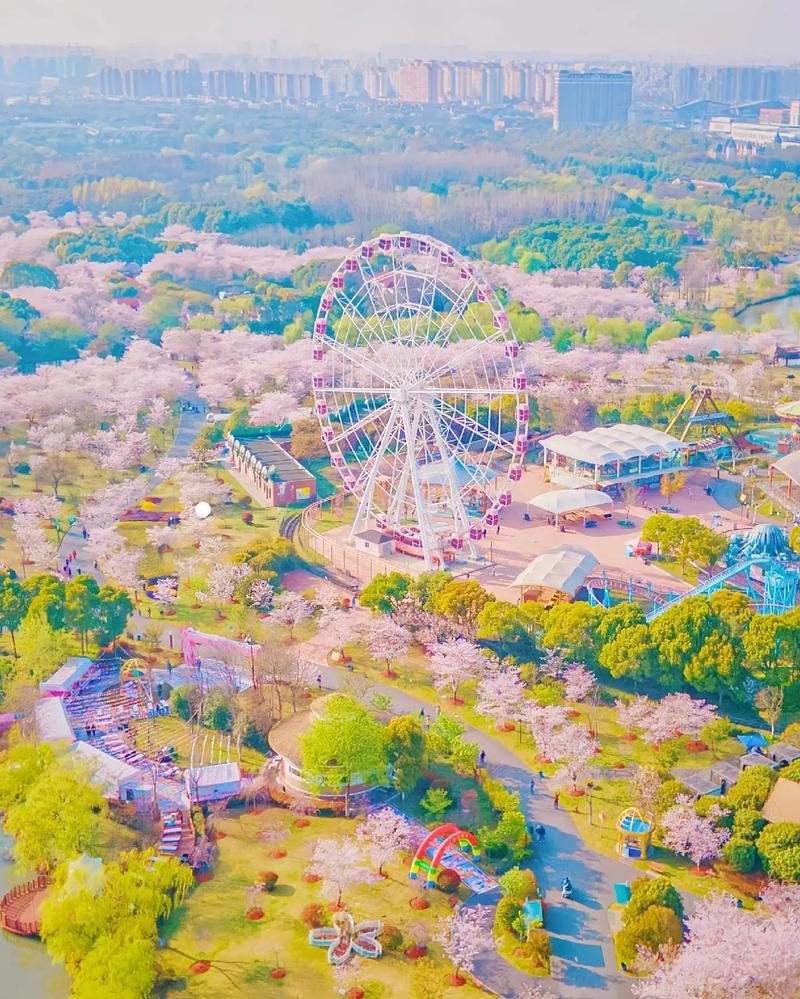
GuCun Park
Spring (March – May) — Blossoms & Hidden Corners
When March comes, Shanghai feels like it’s rushing into bloom. GuCun Park is the top choice for cherry blossoms, where petals scatter like pink snow, and families line up for photos. The mornings are cool and perfect for sipping coffee under the plane trees of the French Concession. By late spring, though, humidity creeps in and the energy of Golden Week transforms Yu Garden into a carnival of lanterns and tourists.
Travel tip: Buy park tickets online through platforms like CTrip to skip long queues, especially during holidays. For a quieter spring stroll, head to Century Park on weekdays, where fewer crowds make it easier to enjoy flowers. Food stalls around the gardens sell seasonal snacks like fried buns and tanghulu — worth a try when the lines aren’t overwhelming.
Summer (June – August) — Heat, Rain & Nightlife
Summer arrives with plum rains in June, leaving balconies dripping and plans on hold. Locals retreat indoors: the Power Station of Art offers both cool exhibitions and reliable air-conditioning, while the Shanghai Science and Technology Museum keeps kids entertained. July and August heat up until even stepping off the metro fogs your glasses.
Travel tip: Plan sightseeing at night when the Bund shimmers with neon on the Huangpu River. Try bubble tea or shaved ice desserts sold along Nanjing East Road. Typhoons can disrupt flights, so book flexible tickets and check weather alerts before you travel. For dining, summer is hotpot season turned upside down — locals prefer chilled noodles or cold dishes at late-night eateries in Xintiandi.
Curious how July fits into Shanghai weather by month? Get the seasonal details here: Shanghai Best Things to Do in July: 2025 Summer Travel Guide
Autumn (September – November) — Festivals & Foodie Season
Autumn is Shanghai’s sweet spot. In September, the Mid-Autumn Festival fills bakeries with mooncakes — the lotus paste ones at Guangming Cun Bakery are classics, but modern flavors like matcha or ice cream pop up too. By October, blue skies return, making riverside walks along the Bund or boat rides on the Huangpu feel cinematic. Century Park and Guyi Garden are perfect for leaf-watching when gingko trees turn gold.
Travel tip: November is hairy crab season, a Shanghai delicacy steamed and served with vinegar and ginger. Book a table at Cheng Long Hang Crab Palace early, as locals flood in. Tourist spots are quieter after October’s Golden Week, and hotel prices drop, so it’s a budget-friendly time to visit. For less crowded photos, head to the Bund just after sunrise — the skyline looks unreal without the daytime crowds.
Winter (December – February) — Cold Air & Festival Glow
Winters in Shanghai aren’t harsh, but the damp chill cuts deep, especially in the alleys. December lights up with Christmas trees on Nanjing Road and decorations at Xintiandi. January mornings sparkle with frost, the perfect excuse to huddle around bubbling hotpot — whether at a big name like Haidilao or small local joints near People’s Square.
Travel tip: Chinese New Year in February transforms Yu Garden into a lantern wonderland. Entry can get packed, so buy tickets online in advance. Fireworks and lion dances create chaos in the best way, but avoid train travel during this period — stations are packed and prices spike. For a warm break, try Shanghai’s winter comfort foods: sesame tangyuan (glutinous rice balls) and steaming bowls of wonton soup, found at street stalls near the Old Town God Temple.
Best Time to Visit Shanghai: Monthly Weather Breakdown
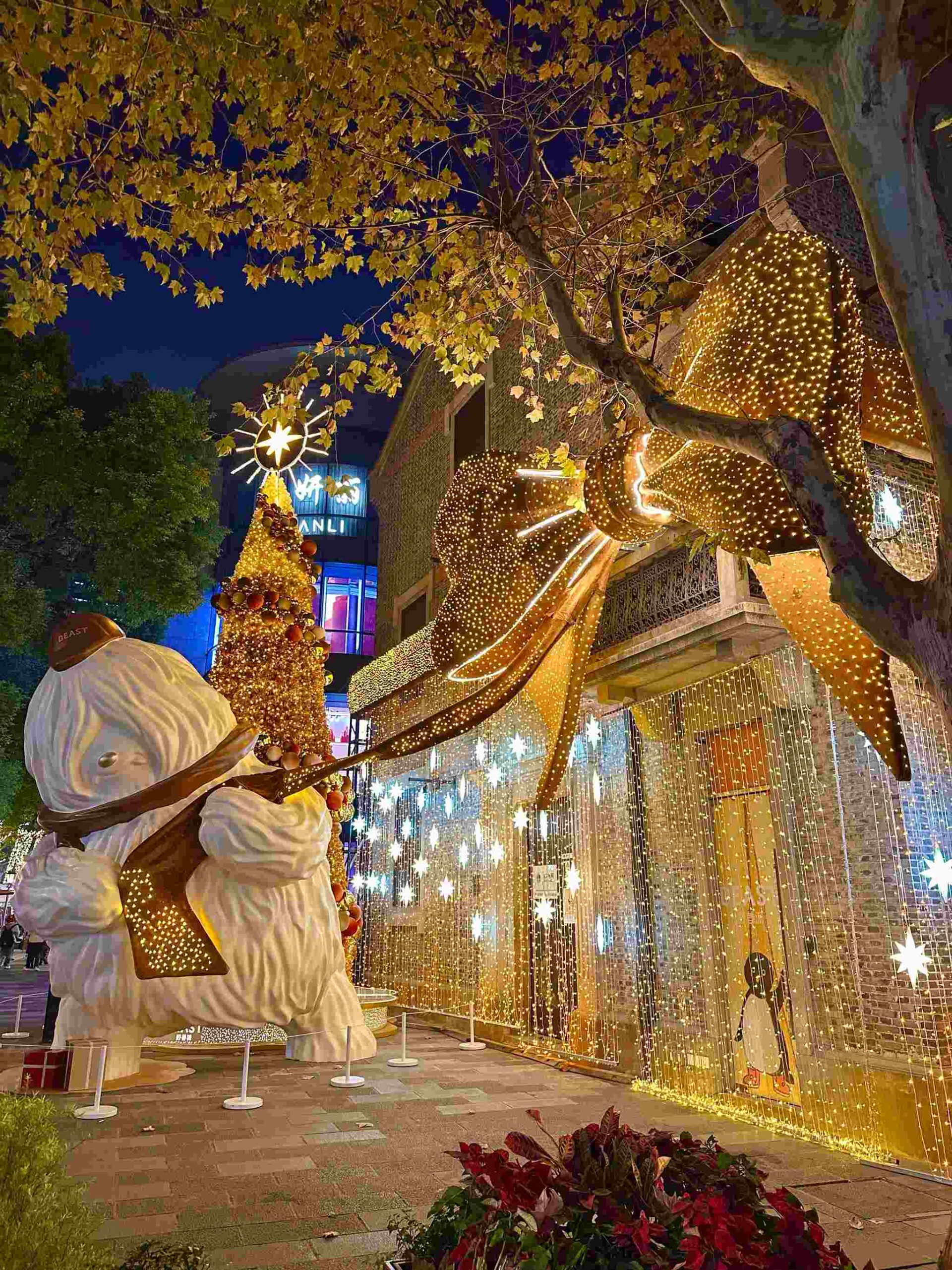
Xintiandi
Spring and Autumn Advantages
March–May (spring) and September–November (autumn) are the seasons that most visitors rave about. In spring, there are cherry blossoms across GuCun Park and small lanes in the French Concession, and autumn has the kind of crisp evenings that are perfect for strolling the Bund. Temperatures average a pleasant 15–24°C, the skies are clear and the Mid‑Autumn Festival or spring art fairs offer further ambiance. Hotels do book more quickly in these windows, so prices go up a bit, but it’s a trade‑off worth it for clearer air and gorgeous light.
Summer Challenges
Summer is cruel with its above 30°c and lashes of storms. The humidity is so thick that your glasses fog when you step off the metro. The energy that daytime sightseeing expends zaps me, and excursions outside the city, like Zhujiajiao, seem too much. But Shanghai at night goes electric — the bars along Yongkang Road buzz, the Huangpu cruises run late, and the malls keep on as cold air cons blast. If you are traveling in July or August, budget additional money for indoor attractions and keep a flexible plan should you encounter typhoon delays.
Winter Charm
Winter is cold and wet, with daytime highs of about 8C and your bones feel the cold, but the city dresses in lights. And the hotpot restaurants steam up, crackling with laughter. Xintiandi twinkles with Christmas decor. January is calm, except for Chinese New Year, then the crowds and fireworks are back. It’s not the most comfortable season, but it does has its own energy — you can roam the streets during lantern festivals, take advantage of low hotel rates (about ¥350–500), and experience a more local side of the city. Here, timing is less about comfort and more about seeking out Shanghai’s winter spirit.
Monthly Weather Tips for Your Shanghai Trip

Moji Weather
Clothing and Layers
Shanghai’s weather has a reputation for being unpredictable, and it’s wise to pack a wardrobe that can adapt. In early spring (March–April), mornings can feel chilly, while afternoons quickly warm up once the sun is out. A light jacket or cardigan layered over breathable cotton shirts is ideal — you can easily add or remove pieces as the temperature shifts. This layering approach also helps when you step indoors, as malls and metro stations are usually heated or cooled depending on the season.
By late spring, especially in May, humidity starts to rise, and sudden showers are common. A packable rain jacket, a thin sweater for cool evenings, and comfortable walking shoes are essentials. If you plan to visit scenic spots like GuCun Park for cherry blossoms or stroll through Century Park, consider bringing a hat and sunglasses, as the midday sun can be stronger than expected.
Gear and Safety
Rain is part of the Shanghai summer, especially during the “plum rain season” (June to early July). Showers can arrive suddenly, so always carry an umbrella or lightweight raincoat in your day bag. Investing in a sturdy, wind-resistant umbrella is worth it — cheap ones often flip inside out at the first strong gust, leaving you drenched. Waterproof shoes or quick-dry sneakers will save you from walking around in soggy footwear after a sudden downpour.
From July to September, typhoon season brings heavy rains and occasional strong winds. While it’s not stormy every day, it’s smart to stay updated on weather alerts. Download apps or check local news for storm warnings, and always have a backup plan for indoor activities, like exploring the Shanghai Museum or the futuristic Shanghai Science and Technology Museum. If you’re flying in or out, allow extra time for possible delays and consider travel insurance for peace of mind.
Apps and Budgeting
Shanghai’s high-tech infrastructure makes it easier to manage your trip if you know which apps to download. For real-time weather alerts, Moji Weather (墨迹天气) is popular among locals, though the English translation might be a bit rough — still, it shows live radar and typhoon warnings. Most travelers also rely heavily on WeChat, not just for messaging but also for mobile payments, maps, and even ordering food delivery when it’s raining outside. Joining a local WeChat expat or traveler group can keep you updated on sudden weather changes or travel news.
Budget-conscious travelers should pay close attention to China’s major holidays. Golden Week in May and Chinese New Year (Jan–Feb) bring huge crowds and steep hotel prices, often double the usual rate. To save money, plan your trip for late March, April, or late October to early December when the weather is pleasant but the city is less crowded. During these shoulder seasons, you’ll also find better deals on accommodation and smaller crowds at top attractions like Yu Garden and the Bund.
Shanghai Weather: Key Charts & Data
| Month | Avg Temp (°C) | Rainfall (mm) | Sunshine (hrs/day) |
|---|---|---|---|
| Jan | 3–9 | 40 | 3.5 |
| Apr | 15–22 | 95 | 5.5 |
| Jul | 30–35 | 150+ | 6.4 |
| Oct | 17–24 | 70 | 6.0 |
(Values approximate; based on data from Timeanddate.com and local weather bureaus.)
Shanghai Weather FAQs: Practical Travel Advice
Q: What’s the coldest month in Shanghai?
A: January is usually the coldest. Daytime highs hover around 8–9°C, and nights dip to about 3°C. The dampness makes it feel colder than the numbers suggest, and locals often say it seeps straight into your bones. If you’re planning to visit then, bring gloves and layers, otherwise even a short Bund walk can feel endless.
Q: Does it snow in Shanghai?
A: Snow is rare. Light flurries might appear once every few years, but they usually melt quickly. Travelers sometimes expect a snowy skyline, but in reality, it’s mostly mist and drizzle. If you want snow photos, you’ll likely need to head inland to places like Hangzhou or Huangshan.
Q: When is typhoon season?
A: Typhoon season runs July to September. These storms may not always hit directly, but they can delay flights, cancel ferries, and close some outdoor attractions. I’ve seen trains stop for hours in August because of heavy rain. Always check apps like Moji Weather for alerts before making day-trip plans.
Q: Is summer unbearable?
A: Many travelers say yes. With highs of 35°C and humidity around 80%, stepping outside feels like walking into a sauna. Locals carry fans and frozen water bottles to cope. Nights are easier, with cooler breezes by the Huangpu, but day sightseeing can be draining without breaks indoors.
Q: Best time for cherry blossoms?
A: From mid-March to early April, especially in GuCun Park. Tickets cost about ¥20–30, and weekends are crowded with families and photographers. If you arrive on a weekday morning, you’ll have a calmer view of the pink blooms before the tour buses arrive.
Q: Cheapest month to visit?
A: Late November and February are often the cheapest. Hotel prices drop once peak seasons end, with mid-range rooms going down to ¥350–500. Flights can be discounted too, though you’ll trade low costs for chilly evenings and fewer festivals.
Q: Are museums good rainy-day options?
A: Absolutely. The Shanghai Museum is free but requires online booking, and the Power Station of Art has rotating exhibitions for around ¥80. On a wet afternoon, both spots give you hours indoors and a deeper sense of the city’s culture.
Q: Should I pack winter boots?
A: Heavy boots aren’t necessary. A warm coat, scarf, and sturdy shoes will do. Roads rarely freeze, and locals usually get by with sneakers plus extra socks. If you’re sensitive to dampness, waterproof shoes are a smarter choice than bulky boots.
Q: Is autumn really that nice?
A: Yes, and it’s not just hype. October skies are bright, daytime temps are a comfortable 17–24°C, and evenings are crisp. Parks like Century Park and the French Concession tree-lined lanes turn golden, and even locals slow down to enjoy the air. Missing autumn here feels like skipping the city at its best.
Q: How to track real-time weather in English?
A: Sites like Timeanddate.com and AccuWeather provide reliable updates. Moji Weather has an English option, though translations are clumsy. Many travelers also rely on screenshots from WeChat groups, since locals often share the most accurate warnings there.
